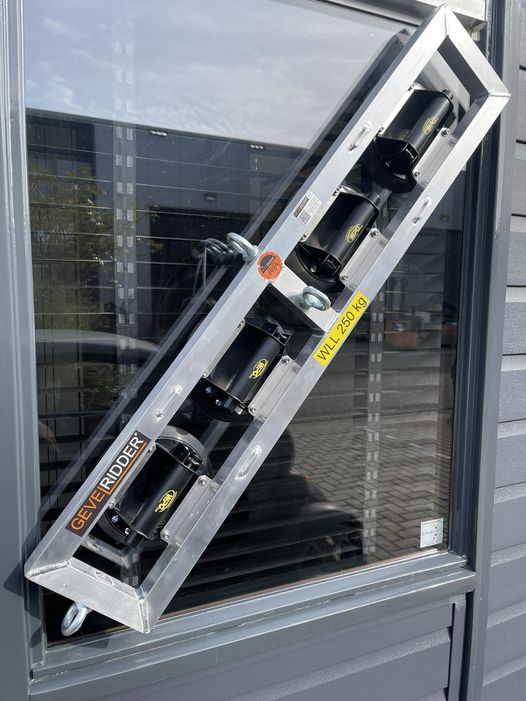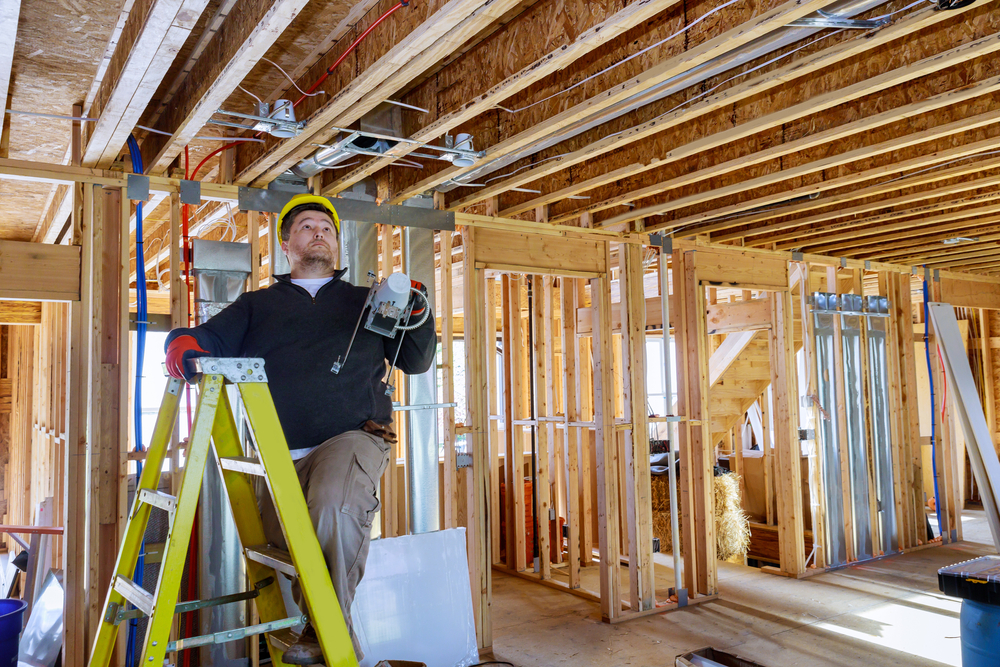The double vacuum system is a crucial tool in the construction sector, especially for lifting and moving large and heavy panels such as glass, metal, or stone. This system offers extra safety and efficiency, which is essential in an environment where mistakes can be costly. In this text, we explain what a double vacuum system is, how it works, and how to apply it safely and effectively on the construction site. On ground level below 1.8 meter a dual or double system is not mandatory because you can monitor the vacuumsystem very well,at this level it is allowed to use manual or hand vacuum systems.
What is a Double Vacuum System?
A double vacuum system consists of two independent vacuum circuits, each connected to multiple suction cups. This dual protection ensures that if one vacuum circuit fails, the other circuit continues to support the load. This significantly reduces the risk of accidents, making the system particularly suitable for lifting heavy and fragile materials.
How Does a Double Vacuum System Work?
The double vacuum system operates using two separate vacuum pumps and reservoirs that generate vacuum force. These components are connected to suction cups that attach to the material being lifted and are cross-distributed over the load. The two circuits function independently of each other, meaning that if one circuit loses pressure or encounters a malfunction, the other circuit continues to provide sufficient suction force to safely hold the load.
Key Components
Suction Cups: These are specially designed to provide a strong and reliable grip on the material’s surface.
Vacuum Pumps: Two separate pumps create the vacuum in their respective circuits.
Reservoirs: These maintain the vacuum and ensure there is sufficient suction force to lift the material.
Control Panels: These allow users to monitor and control the status of both vacuum circuits.
Applying a Double Vacuum System on the Construction Site
Preparation
Inspection: Before use, check all parts of the double vacuum system for any damage or wear.
Cleaning: Ensure the suction cups and the surface of the material are clean and free of dust and debris. This ensures a better grip.
Check the Vacuum Pumps: Ensure both pumps are functioning properly and there are no leaks in the hoses or connections.
Usage
Placing the Suction Cup: Position the suction cup on the material you want to lift. Ensure the suction cup makes full contact with the surface.
Activating the Vacuum: Turn on both vacuum pumps and wait until the suction cup has a strong grip. This is usually indicated by an indicator on the control panel.
Double Check: Ensure both vacuum circuits are active and providing sufficient suction force. This provides extra safety during lifting.
Lifting and Moving
Lifting: Use the lifting mechanisms on the construction site to slowly and carefully lift the material. Ensure the material remains stable and the suction cups stay firmly attached.
Moving: Carefully move the material to the desired location. Ensure the path is clear of obstacles and the material remains stable during transport.
Placing: Once the material is at the desired location, slowly lower it and ensure it is safely placed before releasing the suction cups.
Aftercare
Post-Use Inspection: After use, check all parts of the double vacuum system for wear or damage.
Maintenance: Regularly maintain the vacuum pumps and replace worn parts promptly to ensure the system remains in optimal condition.
Safety Tips
Always Have a Backup Plan: Although a double vacuum system offers extra safety, it is important always to have a backup plan in case both systems fail. This is best done with a fall protection system, such as straps around the load.
Training: Ensure all operators are well-trained in using the double vacuum system.
Regular Inspections: Perform regular inspections and maintenance to ensure the system’s reliability.
A double vacuum system is a reliable and safe way to lift and move heavy and fragile materials on the construction site. By making the right preparations, using the system correctly, and performing regular maintenance, you can increase efficiency and minimize the risk of accidents.





